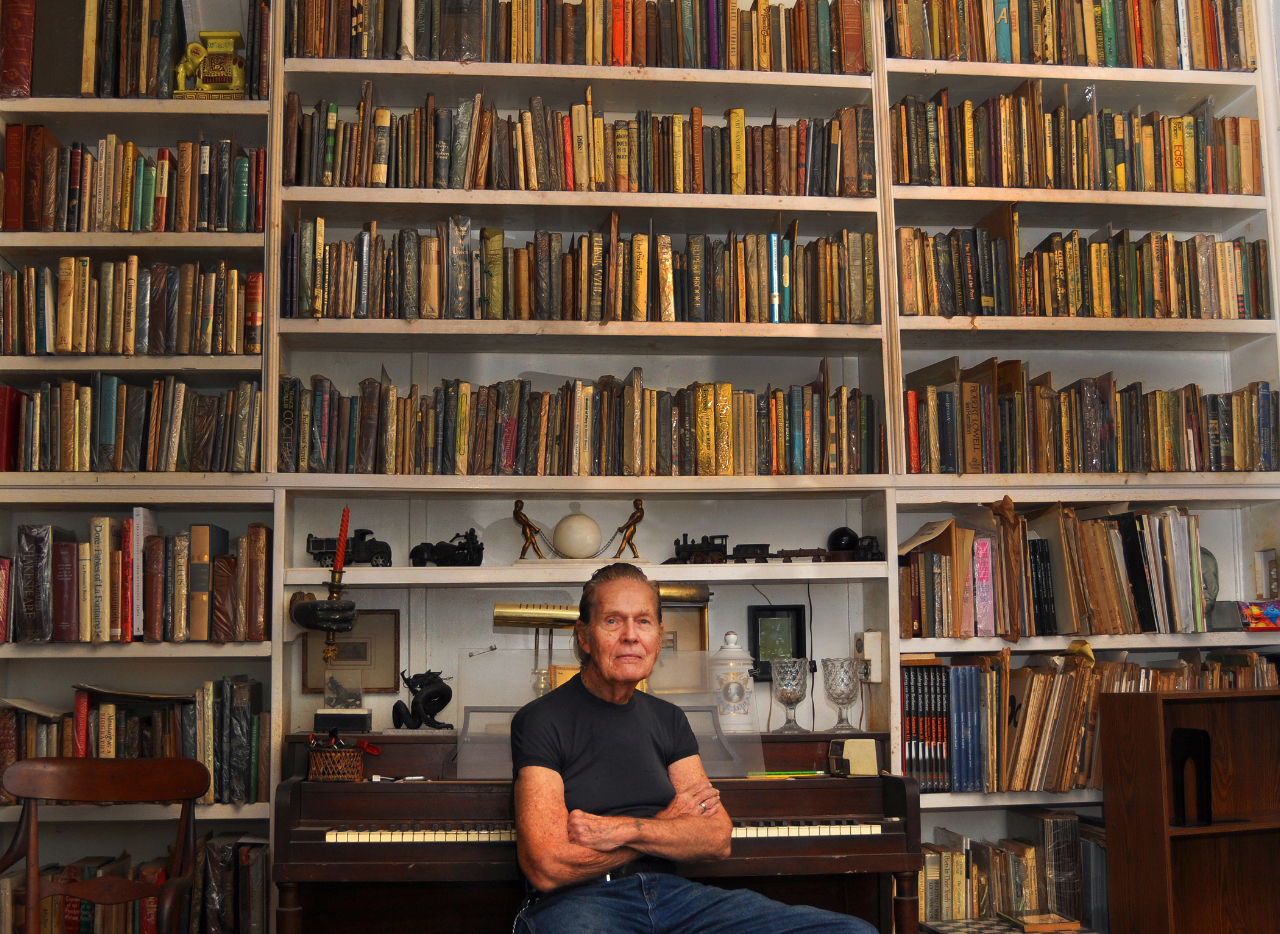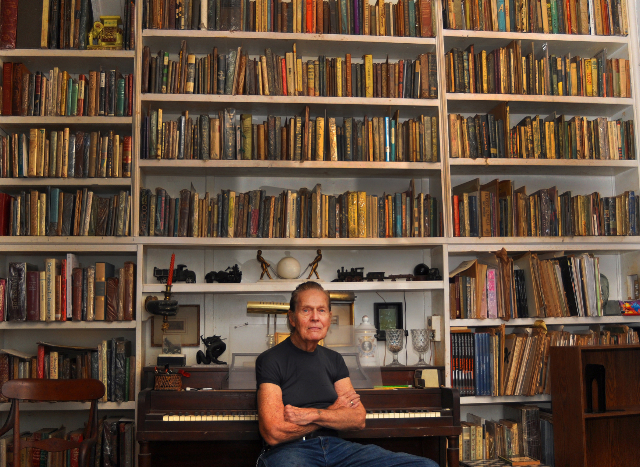Dick Moody

by Kirby Congdon…….
This past week I went to a showing of Dick Moody’s paintings at the new Gildea Gallery in midtown on southward near the Bank of America. Mr Moody has been a vibrant figure having designed a large, impressive, and contemporary shark for Key West on College Road.
I saw, now, a new gift in his use of paint. He is an accurate and provocative professional doing pictorial scenes with a sense of humor on the side. Besides physically presenting in long, slim frames depictions of the Key West water-front from, say, a quarter of a mile out at sea, there were elaborate vignettes, one of which was a classical Greek column celebrating a cocktail on the top of it like a forever unreachable liquor bar. A delectable bunch of cherries hangs in its frame permanently beyond anyone’s grasp. His imagination catches on to almost bizarre subjects. A collection of professional hand-brushes used, perhaps, to dust off a keyboard, or for some other specific reference, is treated, floating in air, as a subject for reflection. I am reminded of our art history in which unnoticed objects of general use have been brought forward as artifacts that reflect whole civilizations because they have evolved in our own time for our own convenience. Such three-dimensional subjects are, by the way, challenged by a society built on invisible electronics. Mr Moody does not attempt to go there in his paintings, but this writer feels he has already been there with his history of working in metals.
This was a diverse show of numerous subjects catching anyone’s attention but privately, we wonder, is he still Dick Moody? The importance of this show is the imaginative treatment of these unusual ideas. They out-weigh the attractive vistas of local scenes. Perhaps the most memorable and most successful piece is a full-front female torso about eighteen inches high, in the nude, of museum quality polished with an exotic gloss. I am reminded of Rainer Maria Rilke’s (1875-1936) famous poem on a male nude, “Archaic Torso of Apollo” (Archaissher Toros Apollo’s) written a century ago, around 1907, but still, along with Dick Moody, alive in the archives of art history.


